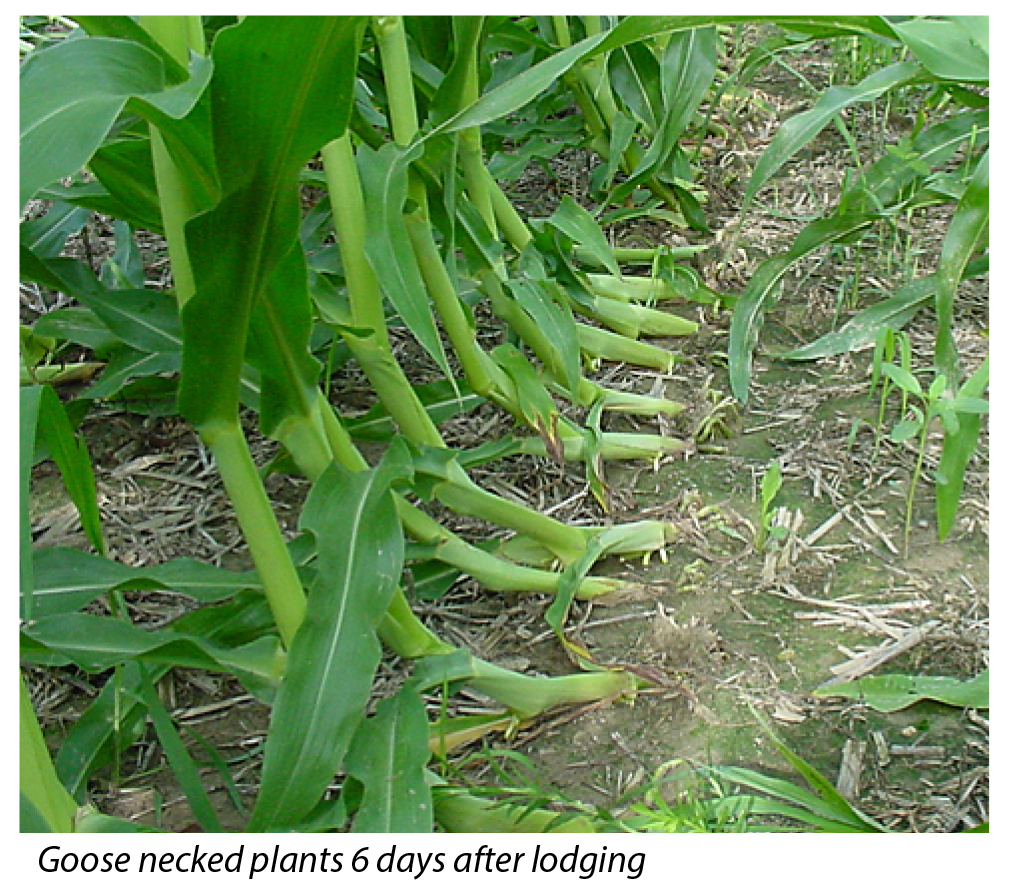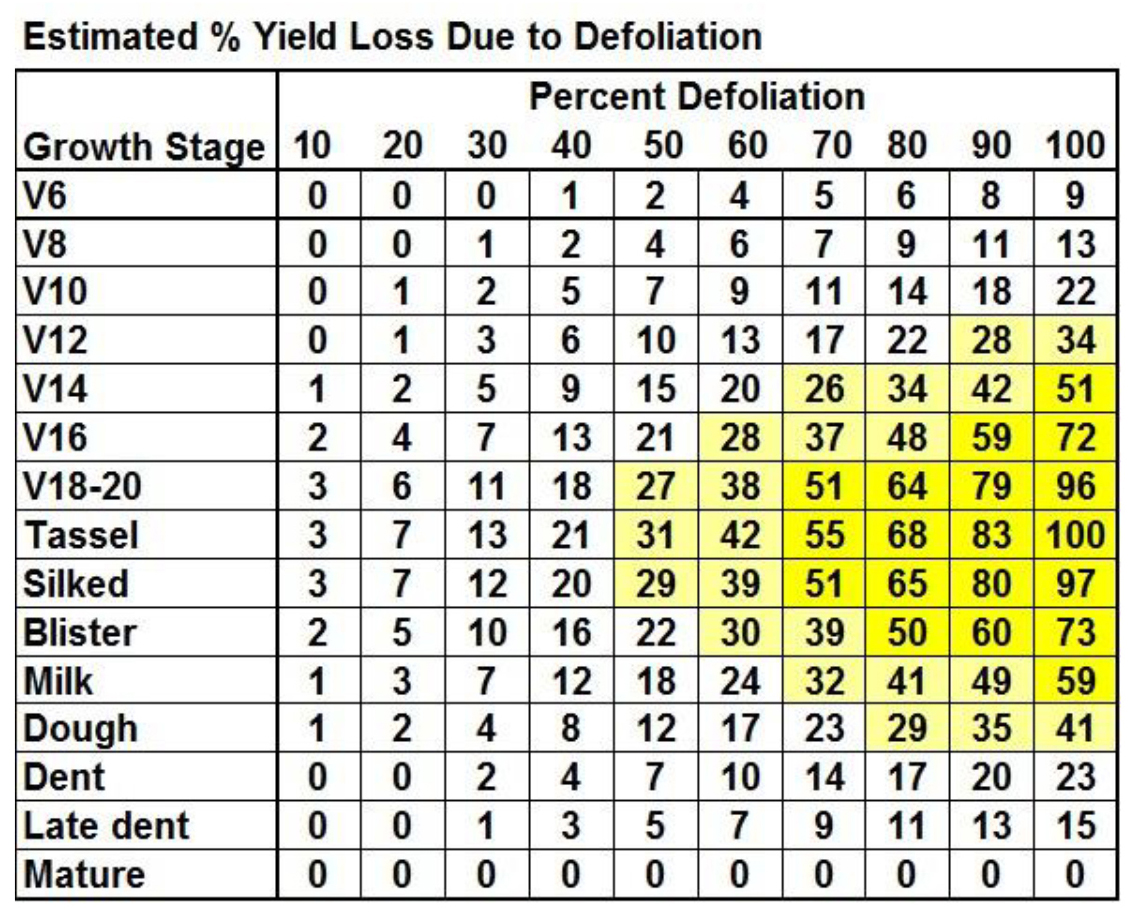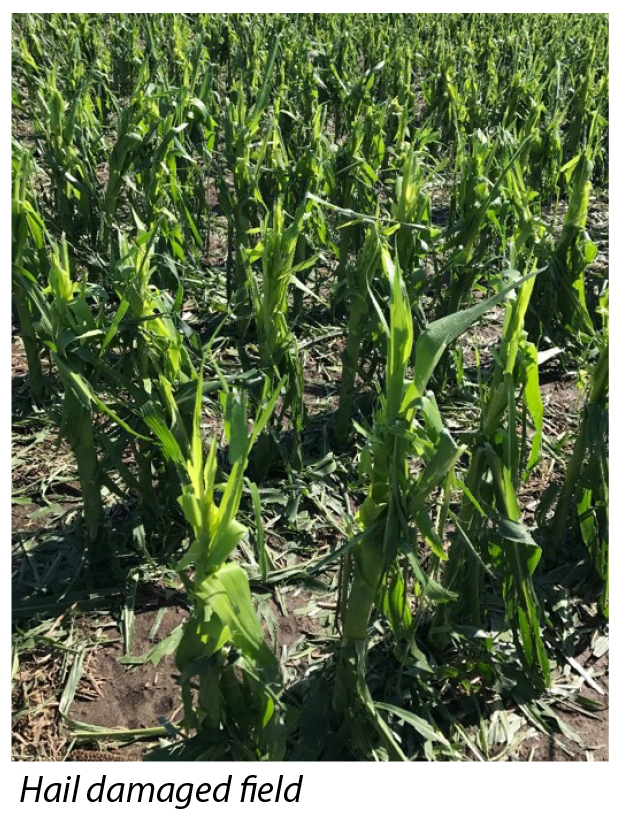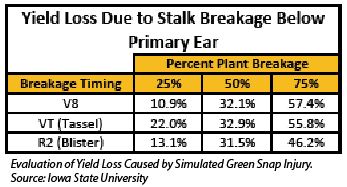Summer thunderstorms with heavy rain and wind can have a significant impact on corn plants. The timing of storms relative to the stage of growth and other agronomic factors can determine if root lodging or green snap of plants occurs. Recent storms with heavy rain and severe winds came through parts of our marketing area at a time when corn is vulnerable to lodging and green snap.
During late June and into July, the corn crop is in a fast vegetative growth stage, and the plant height can outgrow the root mass and its ability to hold the plant upright. The brace root system which begins to develop during flowering has not reached adequate size yet to support the plant against wind storms. Rain can soften the soil and make root lodging more pronounced when wind follows. Dry conditions can cause more green snap to occur on corn, and generally corn is vulnerable to green snap through pollination, but it’s unpredictable.
Root Lodging
The stage of growth is very important when assessing root lodging. If root lodging occurs more than a week prior to tassel emergence, plants still have enough stalk elongation to allow the plant to recover to near vertical, but goosenecking will occur. Harvest efficiency could be affected by goosenecking. The closer the plant is to tasseling the less ability the plants have to recover.
Root lodging many times isn’t uniform across fields or hybrids. Several factors influence the severity of root lodging. Besides stage of growth, soil conditions, row direction and moisture will also impact how plants react to wind.

The yield reduction from root lodging is attributed to two main factors. When part of the root is pulled from the soil, nutrient uptake is disrupted. Over a period of time the root system can recover, but some yield can be lost during this time. Lodged corn also changes the leaf orientation. The plant no longer has leaves at the optimum angle to capture sunlight, leaving some leaves shaded while the plant begins to grow back vertical. While this eventually can correct itself, it will cause stress and reduce yield.
Root lodging that occurs before tasseling will ultimately have a limited impact on yield. Potential for yield loss increases significantly after tassel emergence. Plants with a fully emerged tassel will only be able to recover back to vertical at the top part of the plant, generally above the ear. Not only will this reduce the ability for the plant to capture sunlight and uptake nutrients, but it will also greatly affect pollination. Research has shown, root lodging at pollination and beyond can cause yield reductions ranging from 10-30%. This doesn’t include any harvest loss that may occur while trying to harvest lodged corn.
Greensnap
Greensnap is sporadic and unpredictable and depends on severity of winds, timing, stage of growth, and hybrid. Plants broken below the top ear generally won’t contribute to yield. A second ear has the potential to develop, but many times it will be late and will have minimal production. Plants broken above the ear can continue to develop an ear but the lack of leaves to feed the developing kernels will affect productivity.
Stand loss will reduce yields, but not at a direct proportion to lost plants. Hybrids have great ability to recover and compensate for lower plant populations by flexing and adding more yield to the remaining ears. The yield loss table below shows an estimate of yield potential with reduced stands.
Hail Damage
Hail impacts corn yield by reducing stand, damaging ears, bruising stalks, and defoliation. The chart on page 2 is adapted from the USDA Corn Loss Adjustment Standard Handbook and estimates the percent yield loss due to defoliation. Yield loss from hail damage is most significant close to pollination. When estimating the level of defoliation, shredded leaf tissue that is still green should be counted as healthy tissue.

Determining stand loss and ear and stalk damage should start 7 to 10 days after the hail event to allow plants time to recover. Perform stand counts in at least three areas of a field and count plants that show new, healthy growth. Plants that are severely wrapped up and plants snapped below the growing point should not be counted as productive. Split the stalk on a few plants and look for dark bruised spots along the stalk and near the growing point. Bruised areas will limit nutrient uptake and weaken stalk integrity later in the season.

Hail damaged plants are prone to disease infection, especially Goss’ Wilt. Bacteria are splashed from plant residue onto the open hail wounds leading to infection. Since it’s a bacterial disease, spraying a hail damaged field with fungicides will not prevent the spread of Goss’ Wilt.
Wounds on the plants could also make them more susceptible to fungal diseases, and it's even more important to keep the remaining tissue healthy. For that reason, it's intuitive to consider spraying hail damaged fields with a fungicide to help protect the remaining leaf tissue from fungal diseases. University trials haven't proven this to provide consistent economic return, which should be considered before making widespread recommendations.
Summary
Root lodging can cause yield reduction depending on the stage of corn when damage occurs. Corn at V10-V12 may only show 0-5% yield reduction, but root lodging at pollination and beyond can cause significant yield reduction. If damage occurs before pollination plants will partially recover.
Yield reduction to green snap is not proportional to the percentage of stand loss as hybrids can compensate for lower populations. When evaluating damage, allow time for plant recovery before estimating yield or the impact on harvest. Estimating yield potential and the health of the remaining crop will help you make management decisions to protect yield potential and maximize profit.
The morning after a severe hail storm can look pretty bleak, but hail damaged fields will often turn out better than first expected. Be sure to contact your insurance agent if the field was covered and wait 7-10 days after the storm to assess damage.

